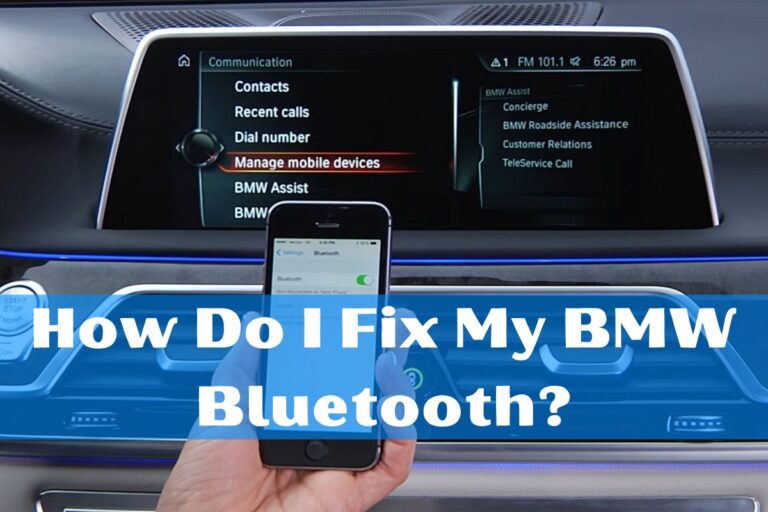How to Replace the Battery in Your BMW Key Fob

If your BMW key fob is no longer locking or unlocking your vehicle, it may be time to replace the battery. In this comprehensive guide, we’ll walk you through the step-by-step process of replacing the battery in your BMW key, as well as discuss the importance of BMW battery registration and provide tips for maintaining your key’s battery life.
Understanding BMW Key Batteries
Before we dive into the replacement process, it’s essential to understand the different types of batteries used in BMW key fobs. The most common battery sizes are CR2450 and CR2032, though the specific battery your key requires will depend on the model year and key design.
The CR2450 battery is slightly larger than the CR2032 and typically offers a higher energy capacity, making it a suitable choice for keys that need to power more advanced features like remote start or keyless entry. On the other hand, the CR2032 is a more compact option that may be preferred in sleeker, slimmer key designs.
Regardless of the battery type, it’s crucial to ensure you’re using a replacement that matches the original specifications. Using the wrong battery could lead to compatibility issues or even damage to your key fob.
Locating the BMW Key Battery
The first step in replacing your BMW key battery is to locate where the battery is housed. This is usually fairly straightforward, as the battery compartment is typically hidden behind a small cover or panel on the back of the key fob.
To access the battery, you’ll need to gently pry open the key fob’s housing. This can often be done with a small flathead screwdriver or a specialized key fob tool. Once the housing is open, you’ll be able to see the battery and its placement within the key.
Replacing the BMW Key Battery
Now that you’ve located the battery, it’s time to replace it. Here’s a step-by-step guide:
- Gather the necessary tools: You’ll need a replacement battery (CR2450 or CR2032, depending on your key model), a small flathead screwdriver or key fob tool, and a clean, well-lit work surface.
- Carefully open the key fob: Using your screwdriver or tool, gently pry open the back cover of the key fob to access the battery compartment.
- Remove the old battery: Carefully lift out the old battery, taking note of its orientation (positive and negative terminals) to ensure the new battery is installed correctly.
- Insert the new battery: Place the new battery in the compartment, making sure the positive and negative terminals align with the key fob’s contacts.
- Reassemble the key fob: Once the new battery is in place, carefully snap the back cover of the key fob back into position, ensuring it clicks securely.
It’s important to handle the key fob with care during this process to avoid any damage to the internal components. If you’re unsure about any step, refer to your BMW owner’s manual or consult a professional for assistance.
BMW Battery Registration and Coding
After replacing the battery in your BMW key fob, it’s essential to register the new battery with your vehicle’s computer system. This process, known as BMW battery registration or coding, ensures that your car’s electronics recognize the new battery and can properly manage its charging and performance.
Failing to register the new battery can lead to a range of issues, including difficulty starting your vehicle, erratic behavior of electronic systems, and even premature battery failure. It’s a crucial step that should not be overlooked.
There are a few options for registering your new BMW key battery:
- Take your vehicle to a BMW dealership: The dealership can perform the battery registration process using their specialized diagnostic tools and software. This is the most reliable method, but it may come with a higher service fee.
- Use a third-party tool or service: Companies like BimmerTech offer affordable, DIY-friendly battery registration services that allow you to perform the process at home using a diagnostic cable and their software. This can be a more cost-effective solution, especially for owners who are comfortable with basic automotive electronics.
Regardless of the method you choose, the battery registration process typically involves connecting your BMW to a diagnostic tool, which then communicates with the vehicle’s computer to update the battery information. This ensures that your car’s electrical system can properly monitor and manage the new battery, optimizing its performance and lifespan.
Preventive Measures and Maintenance
To extend the life of your BMW key fob’s battery, there are a few preventive measures and maintenance tips you can follow:
- Monitor battery life: Keep an eye out for signs that the battery is running low, such as the key fob’s range decreasing or the indicator light blinking more slowly. Being proactive about battery replacement can help avoid the inconvenience of a dead key.
- Avoid extreme temperatures: Exposing your key fob to extreme heat or cold can negatively impact the battery’s performance and lifespan. Try to keep your key in a temperate environment when possible.
- Limit unnecessary use: Avoid excessive button pressing or holding the key fob too close to your body, as this can drain the battery faster. Only use the key fob’s functions when necessary.
- Replace batteries proactively: Rather than waiting for the battery to die, consider replacing it every 2-3 years as a preventive measure. This can help ensure your key fob remains reliable and responsive.
By following these simple tips, you can help extend the life of your BMW key fob’s battery and avoid the hassle of a dead key when you need it most.
Conclusion
Replacing the battery in your BMW key fob is a straightforward process, but it’s important to ensure you’re using the correct replacement and properly registering the new battery with your vehicle’s computer system. By taking the time to follow the steps outlined in this guide, you can keep your BMW key fob functioning reliably for years to come.
If you have any further questions or encounter any issues during the battery replacement process, don’t hesitate to reach out to your local BMW dealership or a reputable automotive electronics specialist for assistance. Happy driving!






